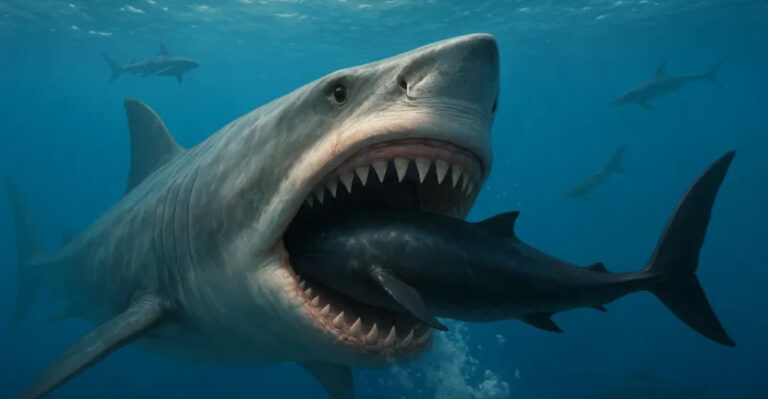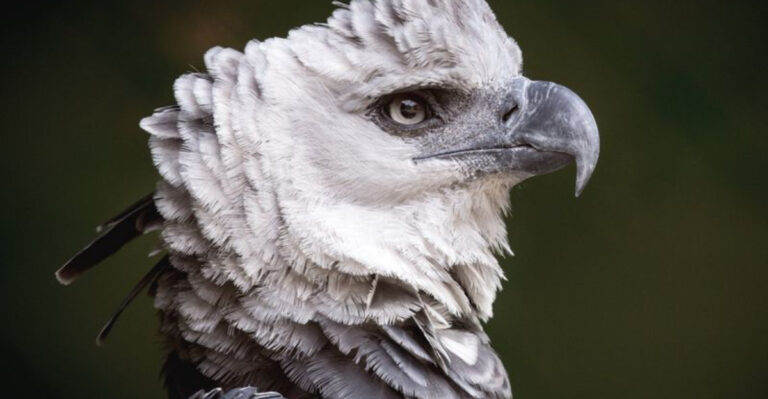The Ocean’s Most Unique And Colorful Sea Creatures
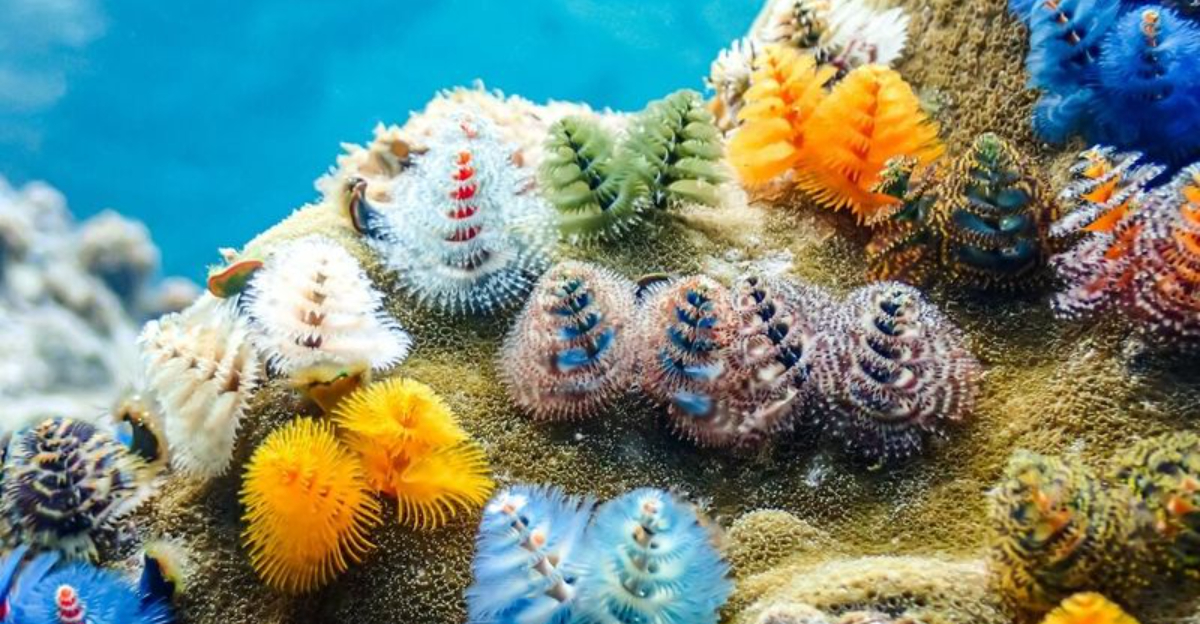
Hidden beneath the ocean’s surface lives a rainbow of extraordinary creatures that seem to belong in science fiction rather than reality.
These vibrant animals use their colors for everything from attracting mates to warning predators of their toxicity. Let’s explore twenty of the most eye-catching and unusual creatures that make our oceans a living kaleidoscope of color and wonder.
1. Blue-Ringed Octopus
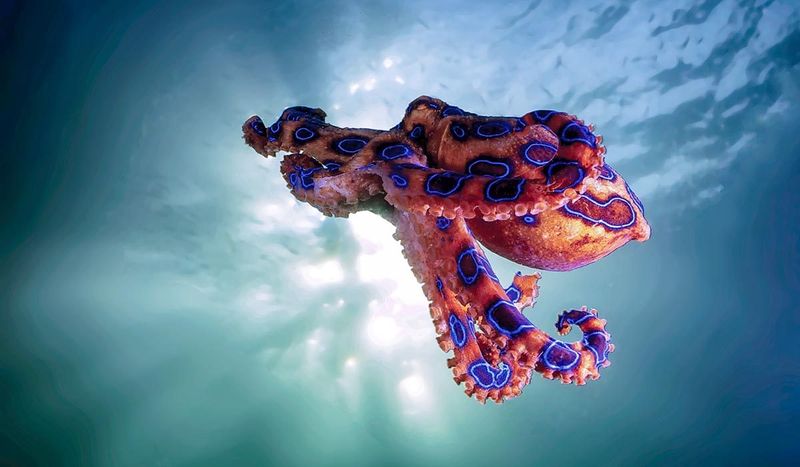
Don’t let its tiny size fool you – this pint-sized predator packs enough venom to kill 26 adults within minutes. When threatened, electric blue rings pulse dramatically across its yellowish skin, creating nature’s most beautiful warning sign.
Usually no bigger than a golf ball, these octopuses hide in tide pools and coral crevices. Despite their deadly reputation, they’re naturally shy and only flash their rings when feeling cornered.
2. Flamboyant Cuttlefish
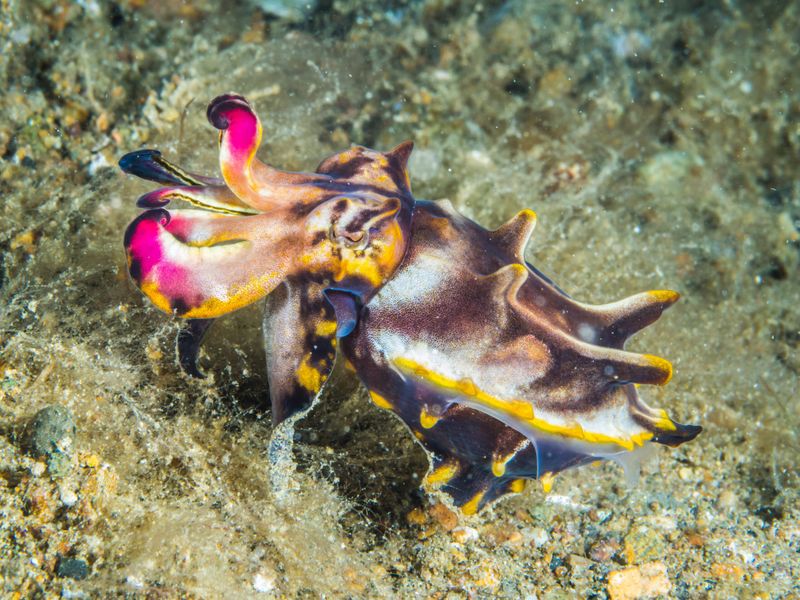
Walking rather than swimming across the seafloor, these masters of metamorphosis put on light shows that would make Las Vegas jealous. In seconds, they can transform from sand-colored camouflage to pulsing displays of purple, yellow, and red.
Despite being only a few inches long, they’re among the most venomous cuttlefish species. Their flesh contains unique toxins similar to those in blue-ringed octopuses, making them the only cuttlefish known to be poisonous to eat.
3. Christmas Tree Worm
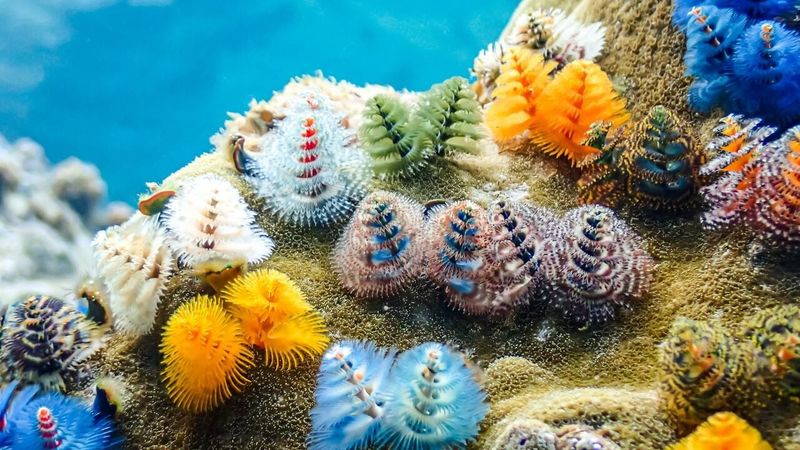
Sprouting from coral heads like tiny underwater holiday decorations, these spiral-shaped filter feeders come in every color imaginable. Their tree-like crowns aren’t just for show – they’re specialized mouth parts that catch passing food particles.
At the slightest shadow or water movement, these sensitive worms instantly retract into their coral homes. Each worm builds a calcium carbonate tube that becomes a permanent part of the coral reef structure, creating a lifelong bond with its home.
4. Mantis Shrimp
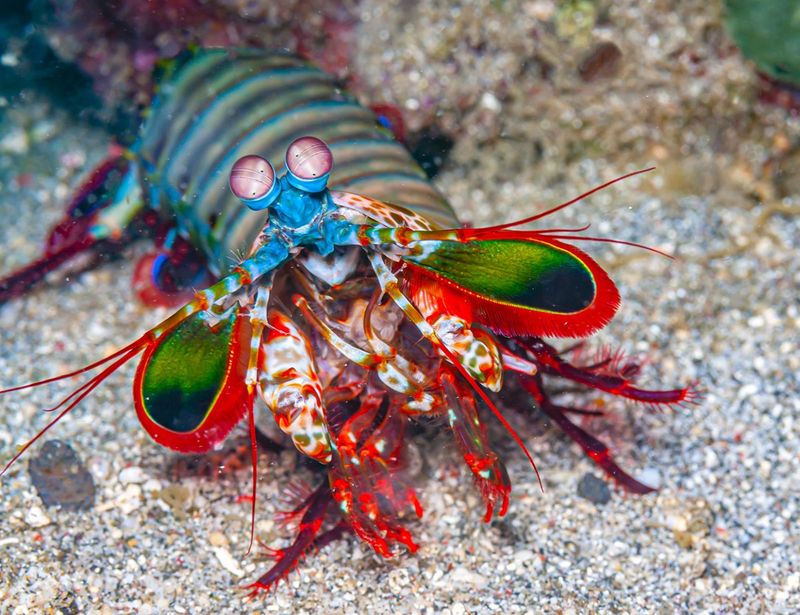
Armed with the fastest punch in the animal kingdom, these kaleidoscopic crustaceans can strike with the force of a .22 caliber bullet. Their bodies showcase a rainbow of metallic blues, greens, reds, and oranges that shimmer like living jewelry.
Even more impressive than their colors is their vision – mantis shrimp can see ultraviolet light and polarized light that’s invisible to humans. With up to 16 photoreceptors (compared to our measly three), they experience a world of color beyond our comprehension.
5. Nudibranchs (Sea Slugs)
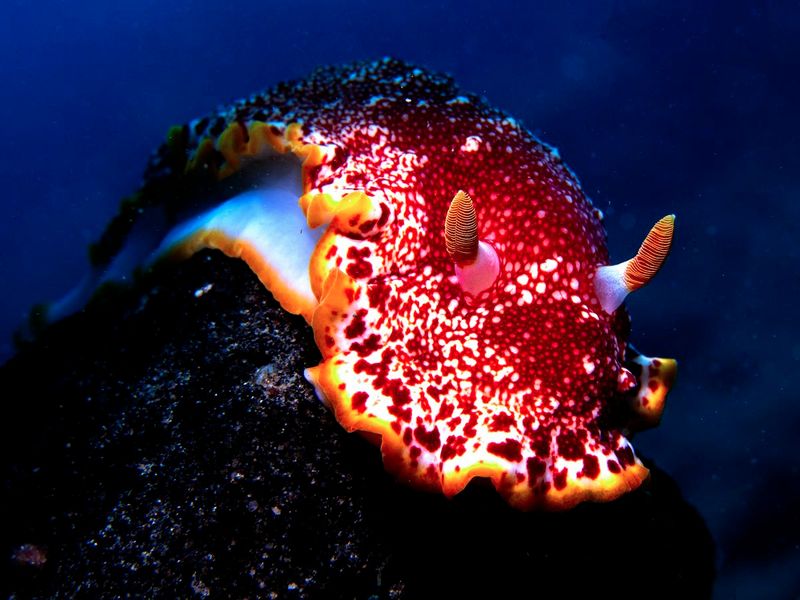
Fashion-forward and fearless, these shell-less mollusks strut across the ocean floor wearing some of nature’s wildest color combinations. From neon pink with blue polka dots to electric yellow with purple stripes, no two species look alike.
Many nudibranchs eat toxic sponges and jellies, then repurpose the stinging cells for their own defense. Talk about recycling! Their outrageous colors serve as a warning to predators: “I taste terrible, don’t even try it!”
6. Clown Triggerfish
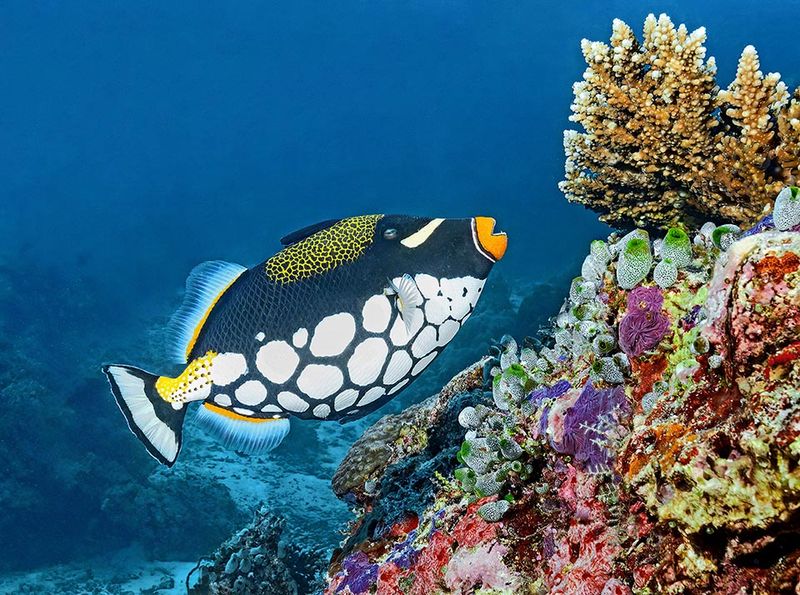
Sporting polka dots on their lower half and yellow lips that look permanently puckered for a kiss, these fish appear designed by a cartoon artist. Their striking pattern of black, white, and yellow makes them impossible to miss among the coral.
Despite their comical appearance, they’re no laughing matter to predators. When threatened, clown triggerfish can lock their dorsal spine upright, making themselves impossible to swallow. They also have powerful jaws that can crack open sea urchins and shellfish with ease.
7. Sea Apple
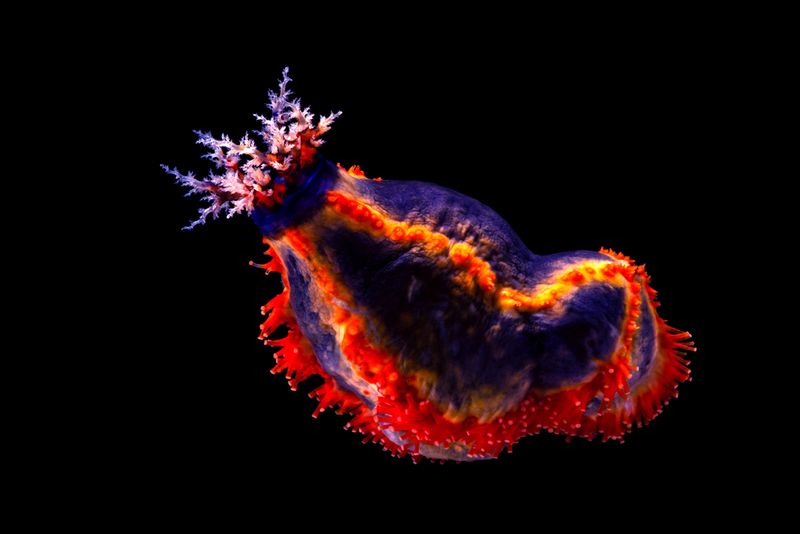
Glowing like neon party decorations, these unusual sea cucumbers wave brilliant purple or red tentacles to filter food from passing water. Their bodies can range from electric blue to vibrant red, creating a striking contrast against the ocean floor.
When threatened, sea apples release a toxic substance that can kill everything in their aquarium. They also have another bizarre defense mechanism – they can essentially liquefy their bodies to squeeze through tiny spaces, then reconstitute themselves on the other side!
8. Weedy Sea Dragon
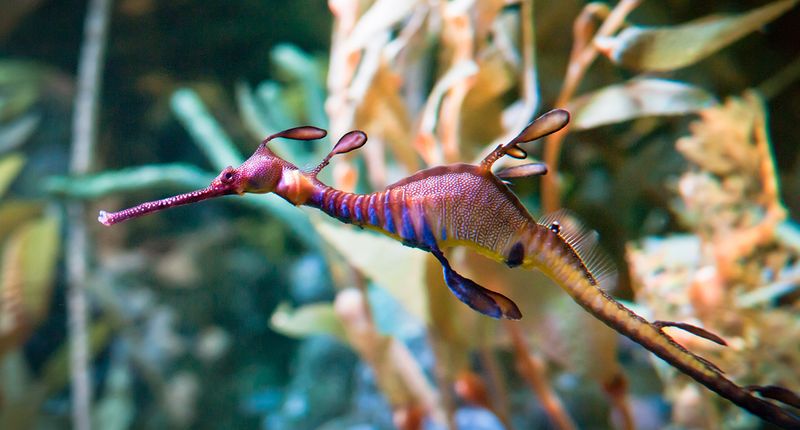
Cousins to the leafy sea dragon, these elegant creatures float through Australian kelp forests like underwater ballerinas. Their bodies feature delicate reddish-pink coloration with yellow spots and wispy appendages that perfectly mimic surrounding seaweed.
Masters of slow-motion movement, they can remain so still that algae sometimes grows on their bodies, adding to their camouflage. Like seahorses, male weedy sea dragons are responsible for childcare, carrying bright pink eggs on their tails until they hatch.
9. Harlequin Shrimp
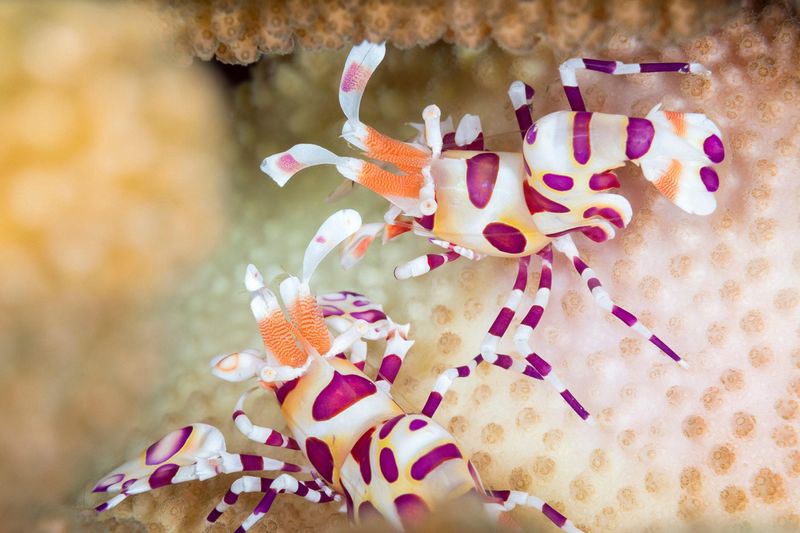
Painted in pastel purple and cream with polka dots that would make a fashion designer jealous, these tiny shrimp are as beautiful as they are brutal. Working in devoted pairs, they hunt exclusively for starfish, which they flip over to access the soft underside.
Once they’ve captured a starfish, harlequin shrimp keep it alive while slowly consuming it over days or weeks. They even drag their prey to safe hiding spots, storing their living food for future meals in one of nature’s more disturbing feeding strategies.
10. Picasso Triggerfish
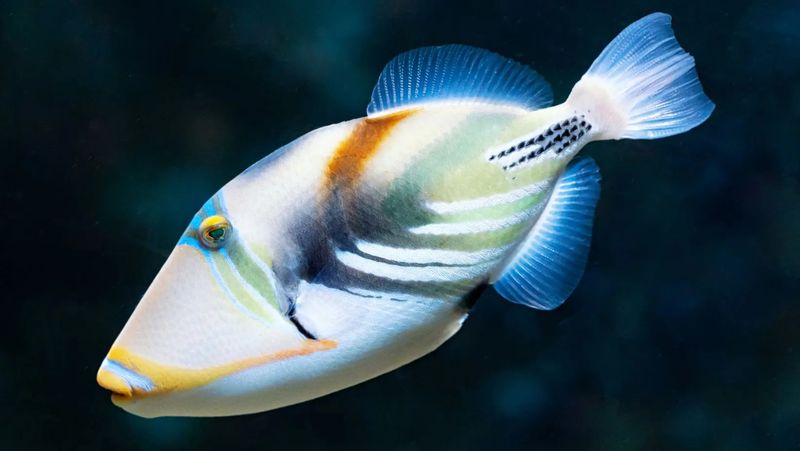
Named after the famous artist, these fish look like swimming abstract paintings with their bold yellow, blue, and black geometric patterns. A distinctive blue line runs across their face like an artist’s brushstroke, giving them their artistic namesake.
Fiercely territorial, Picasso triggerfish will charge at anything that invades their space – including human divers! They use powerful teeth designed for crushing coral and shellfish, which continue growing throughout their lives to compensate for wear from their hard diet.
11. Frogfish
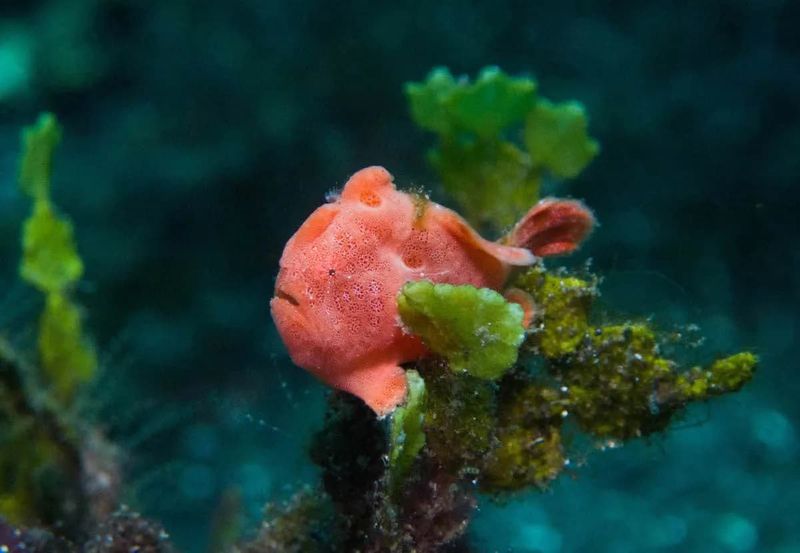
Imagine a grumpy tennis ball with fins that can change colors like a chameleon and swallow prey larger than its own head. Frogfish come in virtually every color – from bright yellow to deep red to mottled pink – perfectly matching their surroundings.
Instead of swimming, they use modified fins to “walk” along the seafloor. Their most remarkable feature is a fishing rod-like appendage that extends from their head, complete with a lure that mimics small fish or worms to attract unsuspecting prey within striking distance.
12. Candy Crab
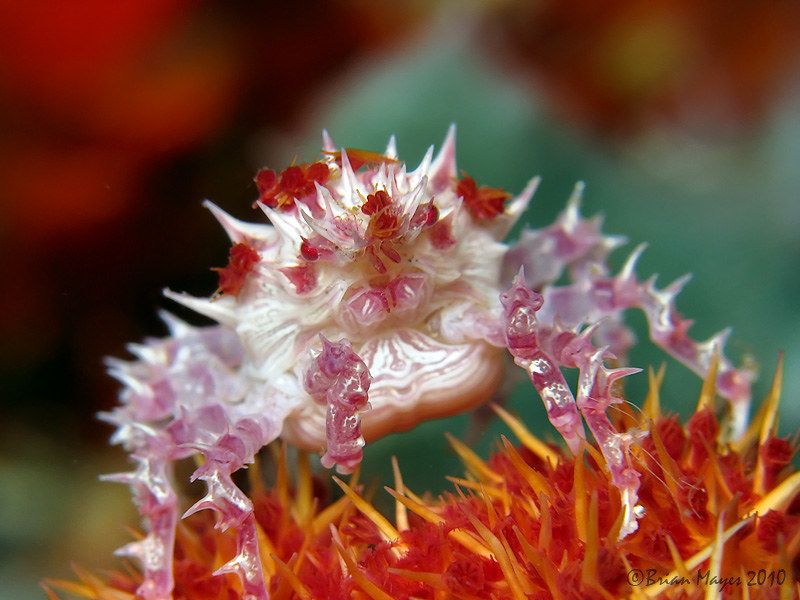
Perfectly mimicking the colorful soft corals they live on, these tiny crustaceans come in strawberry red, cotton candy pink, and vibrant purple varieties. Their bodies are covered in small, knobby projections that exactly match the polyps of their coral homes.
These master mimics even move like the coral swaying in the current! For extra camouflage, candy crabs often decorate themselves with pieces of the coral they inhabit. They’re so well-disguised that even experienced divers can look directly at them without spotting their outline.
13. Moorish Idol
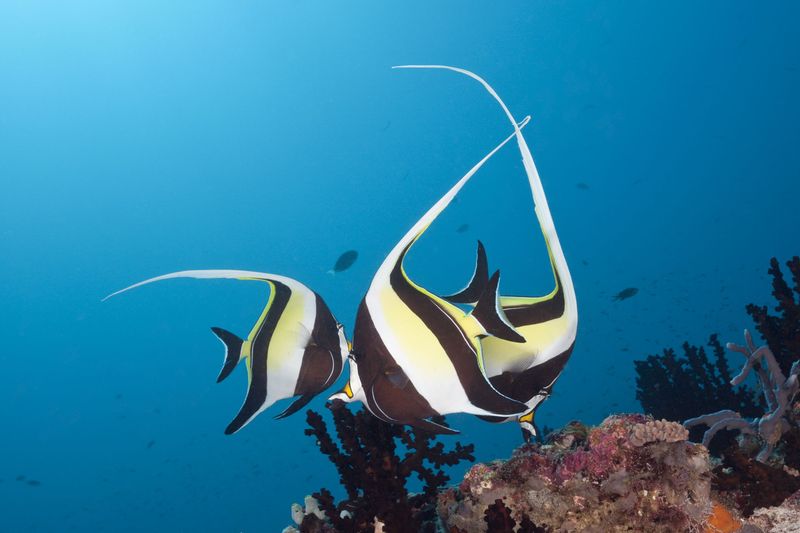
Gliding through tropical waters with ribbon-like dorsal fins streaming behind them, these elegant fish inspired the character Gill in “Finding Nemo.” Their striking pattern of black, white, and yellow bands makes them stand out against blue ocean backgrounds.
Highly social creatures, Moorish Idols travel in small schools, using their pointed snouts to probe coral crevices for sponges and invertebrates. Their name comes from the Moors of Africa, who believed these fish brought happiness. Many people still consider seeing one while swimming to be a sign of good luck!
14. Flamingo Tongue Snail
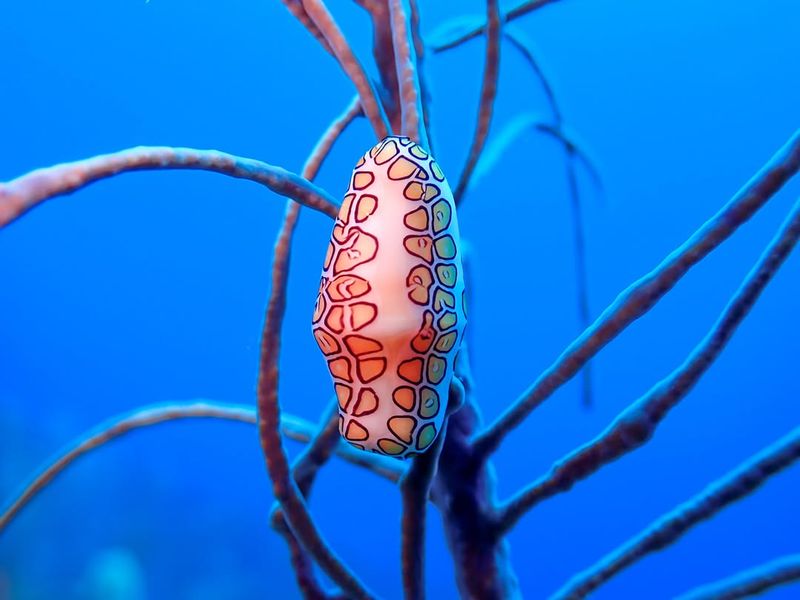
Crawling across sea fans and soft corals, these small snails look like someone dotted the ocean with colorful candy. Their bright orange bodies with black and white spots aren’t actually part of their shells but living tissue that covers them like a cloak.
When disturbed, flamingo tongue snails can retract this colorful mantle, revealing a plain white shell underneath. They’re essentially wearing their gaudy colors as a removable coat! These snails feed on toxic coral tissues, storing the poison in their bodies to discourage predators.
15. Blue Glaucus (Blue Dragon Sea Slug)
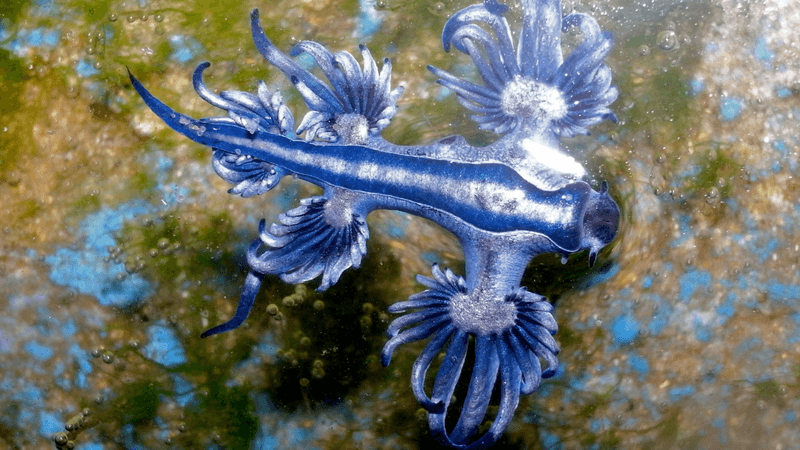
Floating upside down at the ocean’s surface, these ethereal creatures look like tiny dragons from another world. Their electric blue bodies, no larger than a thumbnail, feature finger-like cerata that help them stay buoyant in the water.
Don’t let their delicate beauty fool you – blue dragons are ferocious predators that specialize in hunting Portuguese man o’ war jellyfish. Even more impressive, they store their prey’s stinging cells in their own bodies, becoming venomous themselves and turning their predator’s weapons against them!

